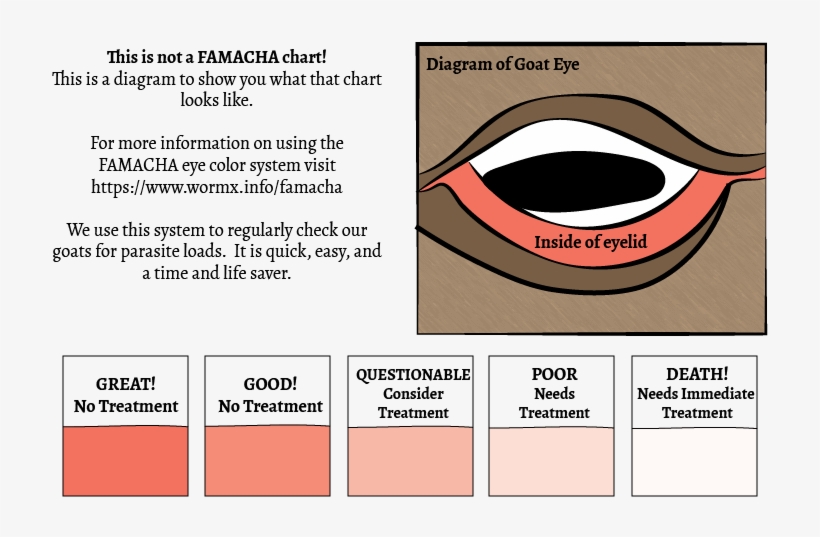Preventive Health & Parasites
Proactive health management is the key to a thriving herd. Learn to spot problems early and build a strong relationship with a goat-savvy veterinarian.
The Daily Health Check
Spend a few minutes observing your herd every day, especially at feeding time. This is the fastest way to spot an issue. A healthy goat is bright, alert, and has a good appetite.
- Eyes: Bright and clear, not cloudy or runny.
- Nose: Clean and dry, no thick or colored discharge.
- Coat: Smooth and shiny. A rough, dull coat can be a sign of parasites or mineral deficiency.
- Manure: Should be firm pellets. Clumpy or watery stool (scours) indicates a problem.
- Movement: Moves easily without limping or stiffness. Stays with the herd.
- Rumen: The left side should feel full but soft, not tight like a drum (bloat). You should hear gurgling sounds every 20-30 seconds.
Core Vaccinations: CDT
The most important vaccine for nearly all goats is CDT, which protects against Clostridium perfringens types C & D (enterotoxemia or "overeating disease") and Tetanus.
- Kids: Typically receive their first shot at 4-6 weeks of age, with a booster 3-4 weeks later.
- Adults: Receive an annual booster shot.
- Pregnant Does: Get a booster 4-6 weeks before their due date. This passes immunity to the kids through the colostrum.
Understanding Tetanus Prevention
Tetanus is a deadly disease caused by bacteria found in soil. It's crucial to understand the difference between the two types of protection available.
- Tetanus Toxoid (Preventative): This is the vaccine included in the CDT shot. It stimulates the goat's body to create its own long-lasting immunity. It is given annually for prevention but takes about two weeks to become effective after a booster.
- Tetanus Antitoxin (Emergency): This provides immediate, short-term protection by giving the goat pre-made antibodies. It is used in emergencies, such as after a deep wound, castration, or disbudding on a goat that is not up-to-date on its toxoid vaccine. The protection only lasts for about 7-10 days.
Smart Parasite Management
The old method of deworming on a fixed schedule is no longer recommended, as it leads to parasite resistance. Modern strategy focuses on treating only the animals that need it.

Your Toolkit:
- FAMACHA Scoring: This chart helps you identify anemia (a key sign of the deadly barber pole worm) by checking the color of the goat's lower eyelid mucous membranes. Only deworm animals with pale scores (4s and 5s).
- Fecal Exams: Your vet can run a fecal test to identify what types of worms are present and in what quantity, helping you choose the right dewormer.
- Pasture Management: Rotating pastures, avoiding overgrazing, and keeping feed off the ground are the best ways to prevent parasite problems in the first place.